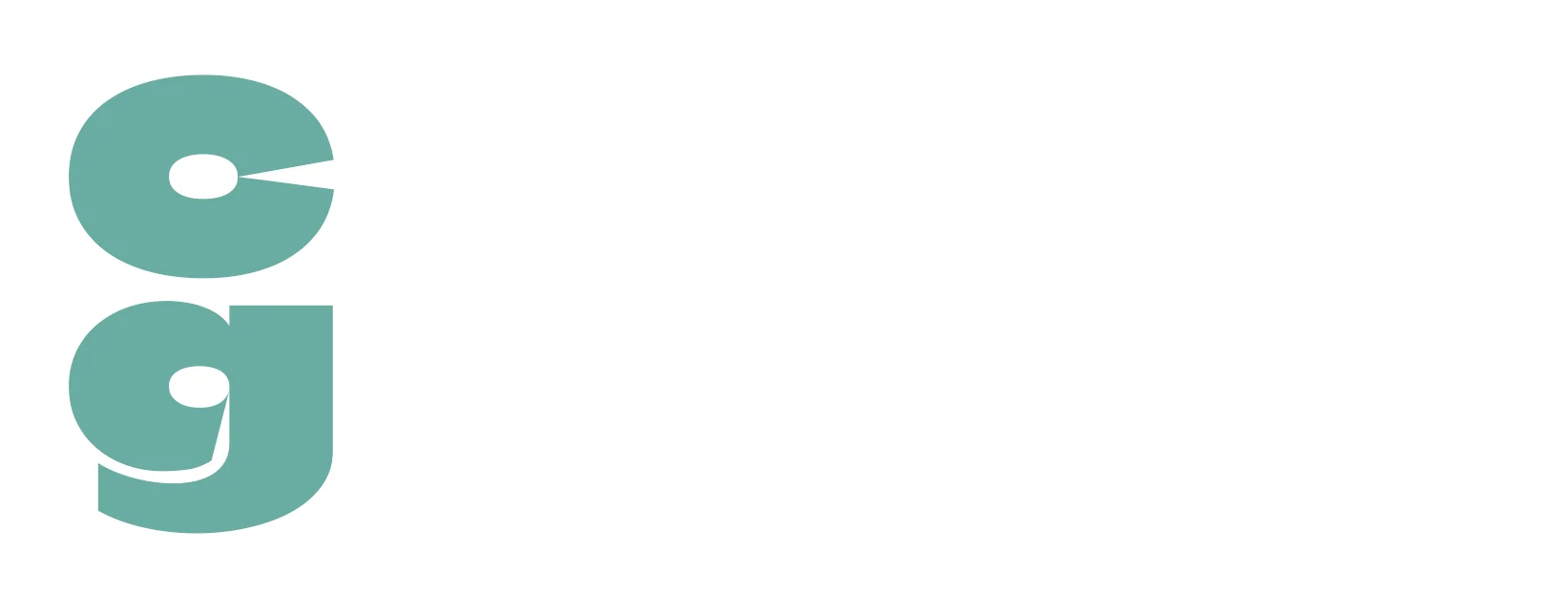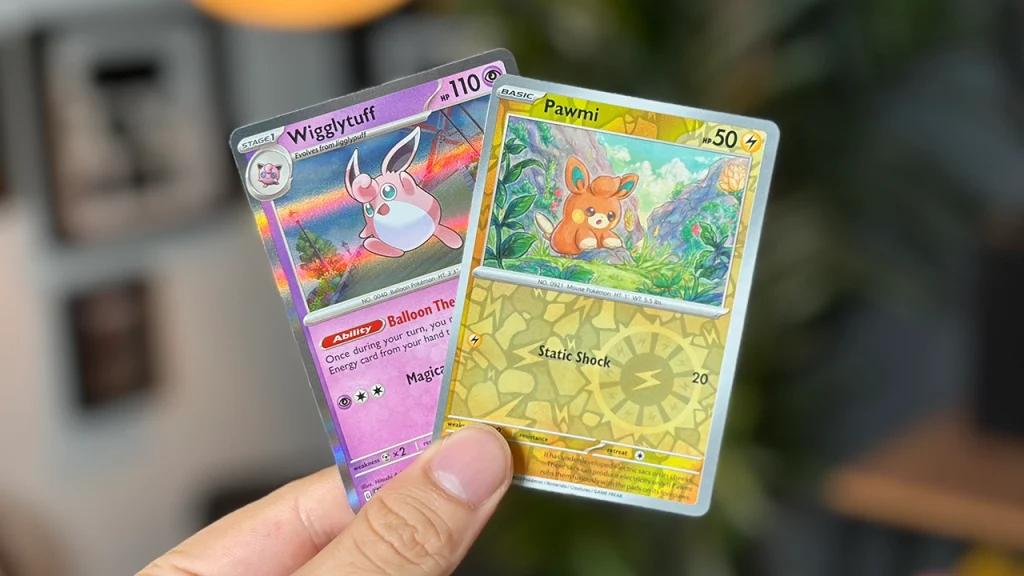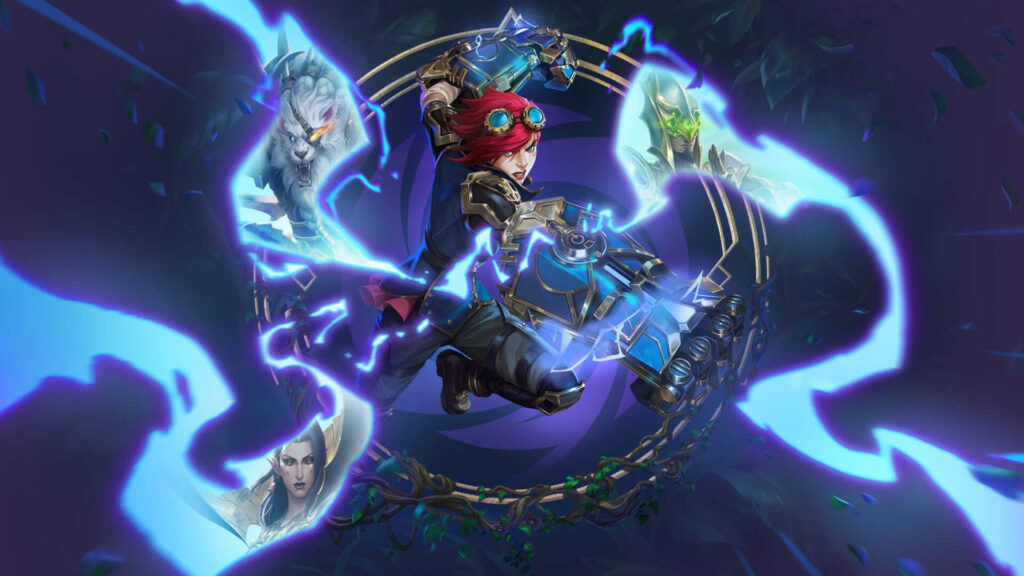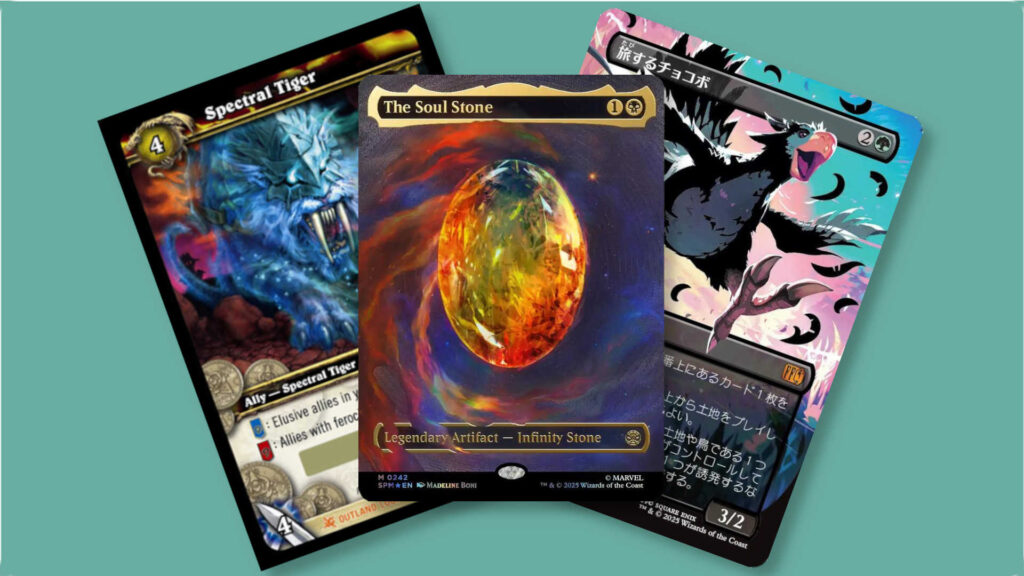When you first start collecting cards for any particular game – whether it be Magic: The Gathering, Pokémon, Lorcana or even more ‘fixed’ distribution games such as Achroma, the difference in cards can be extremely confusing. Not only are there different levels of rarity, but you can often find the exact same card with different art.
Sometimes, there are also variants that have holographic foil, but also look different to other foil cards, even when it’s the exact same card as one that looks entirely different! You’ll hear terms such as holo, reverse holo, full art, extended art, cold foil, rainbow foil and more – it can all be extremely confusing to know the meaning behind those terms. So we’re here to help out and explain the difference between two of the most popular card treatments – using Pokémon Trading Card Game cards as examples.
Table of Contents
ToggleWhat is a Holo Foil Card?
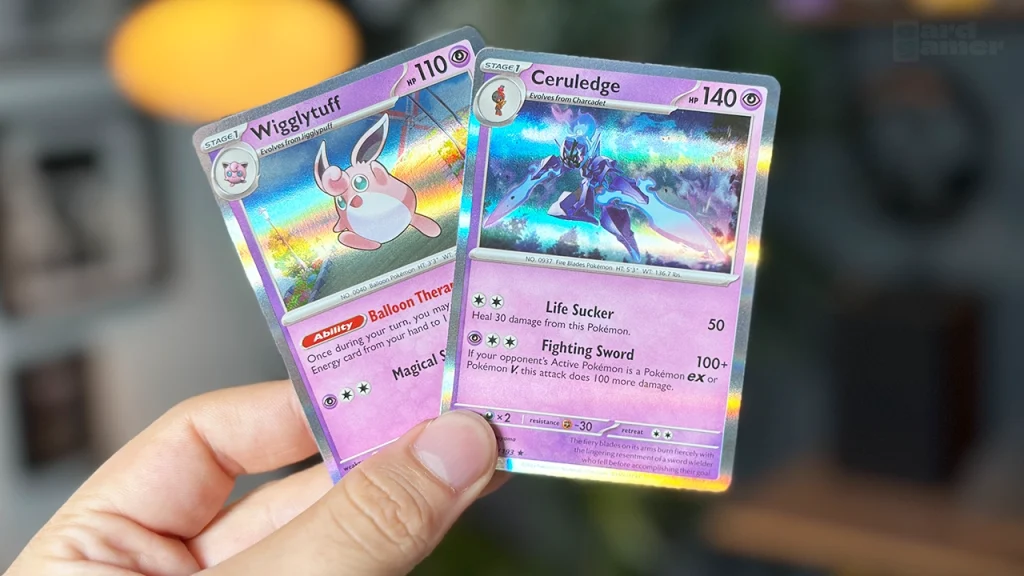
Most CCGs or TCGs (you can find out more about these terms in our what’s the difference between TCG and CCG article) feature cards with special treatments – and holographic, or holo, foil treatments are among the most commonly found across all games.
A holo foil is exactly how it sounds: the image on the card itself is shiny, with a somewhat metallic finish. In some cases, this may also showcase a game or card specific design within the holographic foil itself. When a card is noted as being holo foil, it doesn’t mean that the entire face of the card is holographic and shiny; rather, it’s the card’s illustration that’s treated with holo foil.
If you have a full or extended art variant of the card, then of course the holo foil treatment will cover more of the card – in the case of full art cards, the holo foil will extend over the entire face of the card! Naturally, it’s incredibly unusual to find a card back that’s holographic – because, in a TCG or CCG, it’s important that all card backs look exactly the same, regardless of what set they come from or what variant of card they are.
Otherwise, you’d be able to anticipate cards or rig your deck so your special, shiny foils were in specific positions, right? So yes, holo foil or any other special treatment will usually only be seen on the front of cards. Which brings us to our next explanation!
What is a Reverse Holo Foil Card?
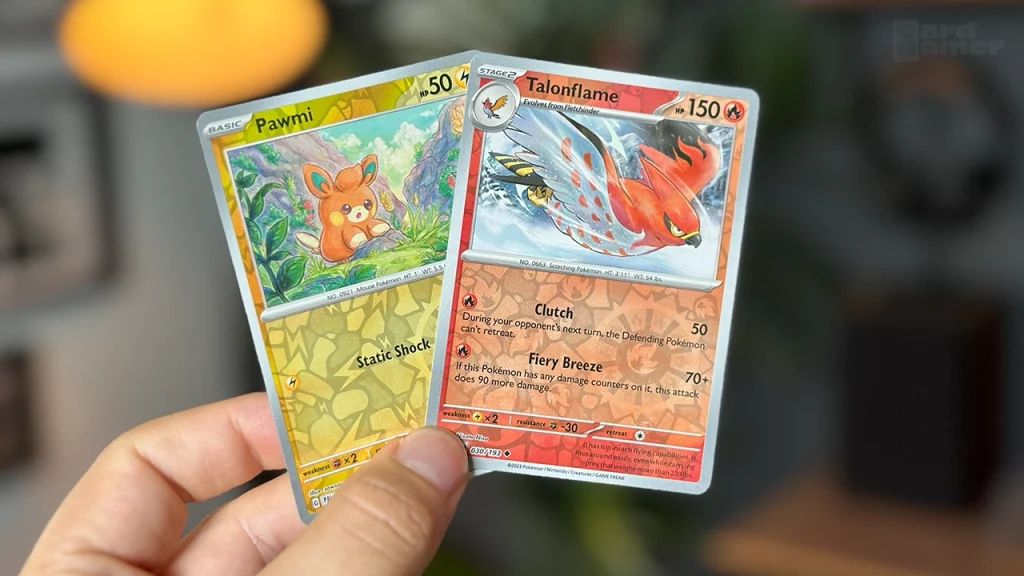
Though not just found in the Pokémon Trading Card Game (or TCG), reverse holo cards are definitely well known in Pokémon – and very popular too.
So if they’re both holographic – what’s the difference between a holo and a reverse holo card? Well, the treatment of a reverse holo usually covers every area on a card except the illustration box. This means it will often have a pretty elaborate, special pattern on the holo foil, but the card’s art will just look like a standard card’s picture – with no shininess or pattern at all. It’s a pretty striking effect – and one we’re particularly fond of here at Card Gamer.
Are Holo and Reverse Holo Treatments Only Found on Rare Cards?
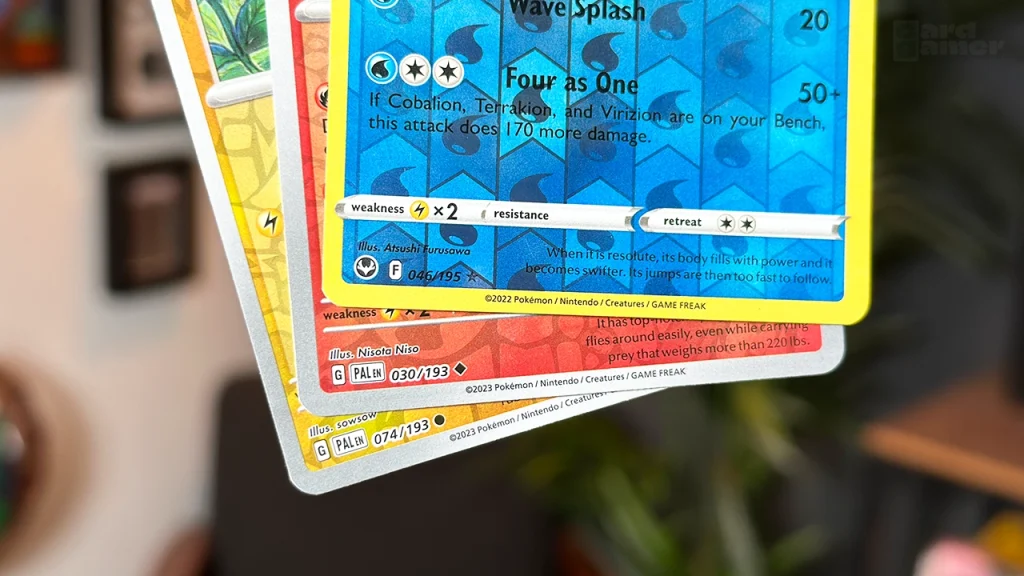
What’s great about both Holo and Reverse Holo treatments is that you can find them applied to just about any card – so you can even find Common cards with holographic treatments. In the Pokémon TCG, card rarity is shown by a symbol, which appears next to the card number.
Pokémon’s rarity system symbols are as follows: a ★ means Rare, ◆ is Uncommon and ● denotes a Common card. There are also variants on the ★ rarity symbol, to denote even scarcer variants of card – it can appear in different colours or with more than one ★, for instance.
Where Can I Buy Holo and Reverse Holo Cards?
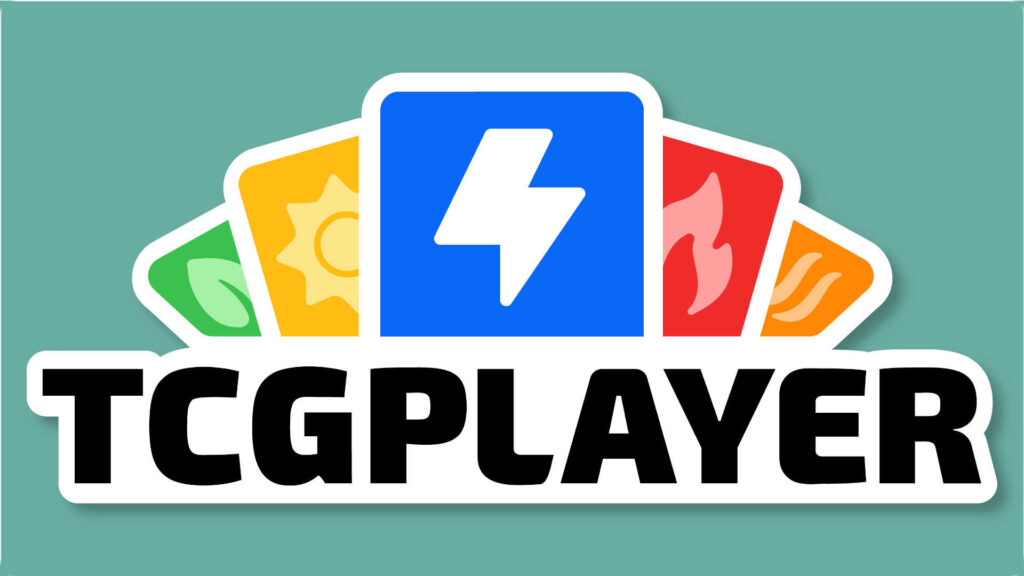
You’ll find all kinds of cards, with full art, extended art, holo and reverse holo treatment at many retailers online. One online card store we’d particularly recommend is TCGplayer, as they even separate these treatments into different sections on their website!
For example, you can check out their entire selection of reverse holo Pokémon cards at this link, or holo Pokémon cards here. If other types of card pique your interest, you can narrow the search using various filters too – right down to the type of art or holo you’re looking for.
What Other Information Is Useful to Know About the Pokémon TCG?
If you’re just getting started with the Pokémon TCG – perhaps you’ve picked up some cards because you liked the look of them, but don’t know what’s next – then check out our handy how to play Pokémon TCG article, which will help you get the (Poké)-ball rolling!
From there, you can move on to checking out the differences between all Pokémon energy types, which will give you a lot of information on what each Pokémon type is known for – and can help you decide which is best for you and the style of play you may prefer!
Or, if all this talk of special cards has you wanting to check out spectacularly illustrated, highly desirable cards with their own special foil treatments – how about taking a look at our list of Tera Pokémon? Though all of these cards look great, they’re not always expensive to acquire – so you can put together a fancy looking deck of Pokémon cards without breaking the bank, in many cases.
Take a look at another special type of Pokémon card in our Ace Spec cards guide.
